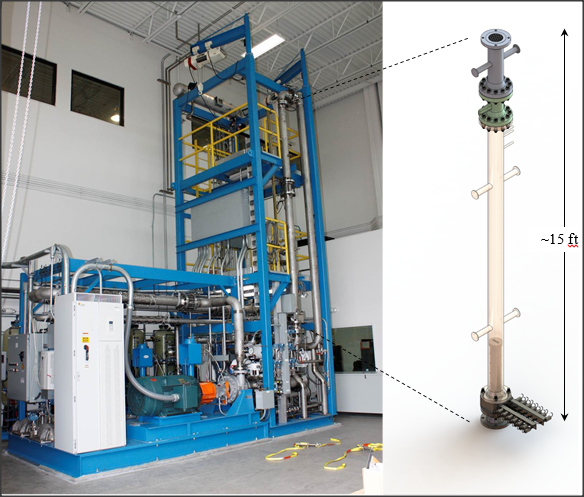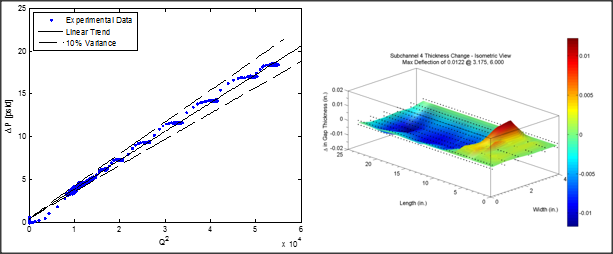The Hydro-Mechanical Fuel Test Facility (HMFTF) is a large-scale thermal-hydraulic separate effects test facility located in the Advanced Nuclear Systems Engineering Laboratory (ANSEL) at Oregon State. The facility operates under an NQA-1 compliant quality assurance program and is currently listed on the Idaho National Laboratory Quality Supplier List as a level 1 supplier. The facility is designed such that any element which can fit within the inner vertical height of the test section region may be tested. This is limited to a component of 15 foot total length (shown in first picture below).
Oregon State has been tasked by the United States Department of Energy Global Threat Reduction Initiative Fuels Development Program to design, construct, and utilize a thermal hydraulic experimental test facility. The primary objective is to produce a database of information to support the qualification of the new prototypic Uranium-Molybdenum, low enrichment fuel forms to be utilized in high performance research reactors to allow conversion from high enrichment fuels currently in use. This data will also be used to validate computational tools used to model fluid-structure interactions. This database of information is to include fuel plate and element plastic and elastic deformation and vibration as a function of operating system pressure, temperature, and flow rate.
The HMFTF was designed to cover the operating envelope of all high performance research reactors in the US while operating under subcooled conditions. The primary loop is rated to 600 psig and 460°F and has the capability to operate with net flow rates ranging from 100 gpm to 1600 gpm. Operators are able to maintain conditions within ± 5 °F, psig, and gpm during testing. In order to recreate the thermal-hydraulic conditions in reactors, the loop can be configured for up or down-flow through the test section
Plate vibration and deformation is measured through the use of accelerometers and strain gages strategically placed on test elements which are connected to a National Instruments PXIe chassis for data acquisition. Pitot tube assemblies are used to measure the static and total pressure within each subchannel of test elements to allow for characterization of flow bias within assembles under test. This system allows for data collection at rates up to 5 kHz for short periods of time over all connected instruments to allow for characterization of the frequency of test element vibrations.

